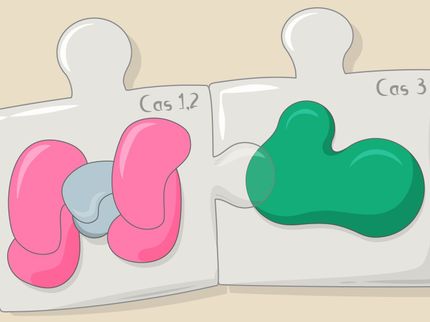Scripps Research Scientists Solve Structure of a Critical Innate Immune System Protein
Scientists at The Scripps Research Institute have solved the structure of a crucial human immune system molecule called TLR3, an acronym for Toll-like receptor three. In an upcoming issue of the journal Science, the protein is described as a large horseshoe-shaped coil composed of 23 leucine-rich repeats (LRRs). The structure reveals details of TLR3 that have never been seen before, an essential step toward fully understanding the critical role this protein and other TLRs play in the human innate immune system to rapidly detect invading pathogens.
In addition to helping scientists better understand how TLRs work, the structure may also help scientists take steps toward improving human health, since TLRs are implicated in a number of diseases and, hence, constitute potential therapeutic targets. In humans, TLRs play a critical role in the immune system because they are the molecules responsible for detecting some of the antigens produced by pathogens. For this reason, Toll-like receptors have been called the eyes of the innate immune system. Normally, when human or mouse cells encounter bacteria or viruses, they recognize proteins, lipids, or other molecular components of these foreign invaders through a family of TLR proteins, and then trigger the immune system's multi-stage biochemical attack on the pathogens.
Humans have at least 10 different TLRs, each of which recognizes a specific subset of antigens. For instance TLR4 recognizes lipopolysaccharide, a chemical component of the cell walls of certain bacteria like Neisseria meningitides-one of the leading causes of bacterial meningitis. TLR9 recognizes bacterial DNA that contains distinguishing CpG dinucleotides motifs .
Likewise, TLR3 recognizes double-stranded RNA, which is the form of genetic information carried by many viruses. The structure that Wilson and his colleagues have solved shows how the repeating leucine-rich repeat motifs assembled in TLR3 in never-before-seen detail. The portion of TLR3 the scientists solved lies on the outside of the membrane and reveals the potential binding site for its ligand, double-stranded RNA.
TLR3 forms a large horseshoe shape that contacts with a neighboring horseshoe, forming a "dimer" of two horseshoes. Much of the TLR3 protein surface is covered with sugar molecules, but on one face that includes the interface between these two horseshoes, there is a large surface that is sugar-free, suggesting that this is where the TLR3 might bind to its target molecule. This surface also contains two distinct patches that are rich in positively-charged residues, suggesting it as a possible binding site for negatively-charged double-stranded RNA.
Organizations
Other news from the department science

Get the life science industry in your inbox
By submitting this form you agree that LUMITOS AG will send you the newsletter(s) selected above by email. Your data will not be passed on to third parties. Your data will be stored and processed in accordance with our data protection regulations. LUMITOS may contact you by email for the purpose of advertising or market and opinion surveys. You can revoke your consent at any time without giving reasons to LUMITOS AG, Ernst-Augustin-Str. 2, 12489 Berlin, Germany or by e-mail at revoke@lumitos.com with effect for the future. In addition, each email contains a link to unsubscribe from the corresponding newsletter.

















































